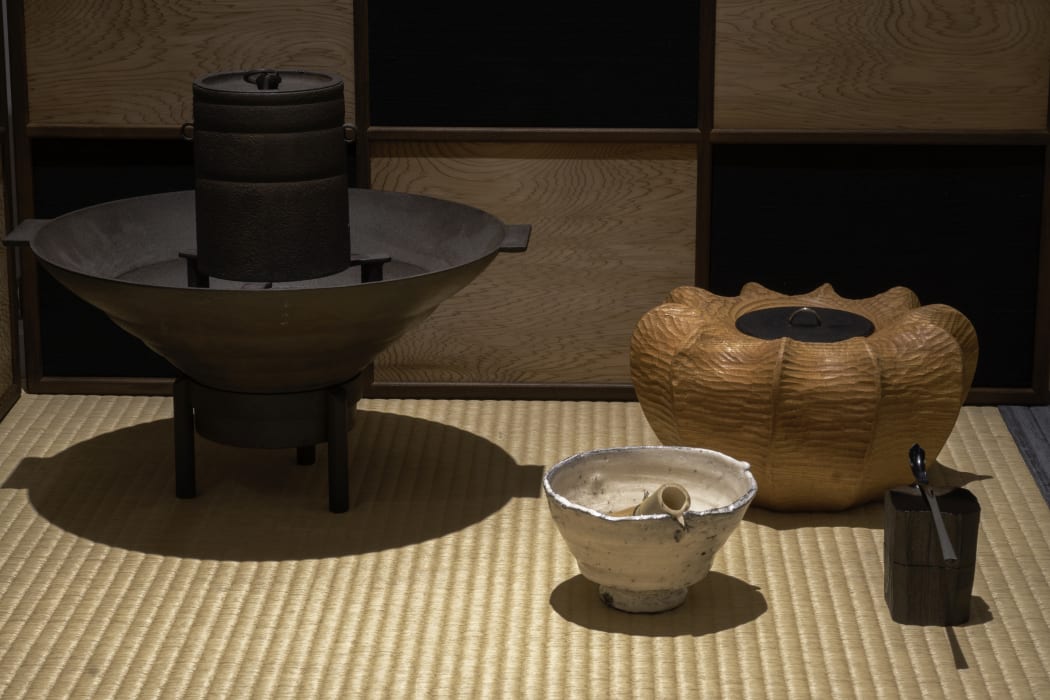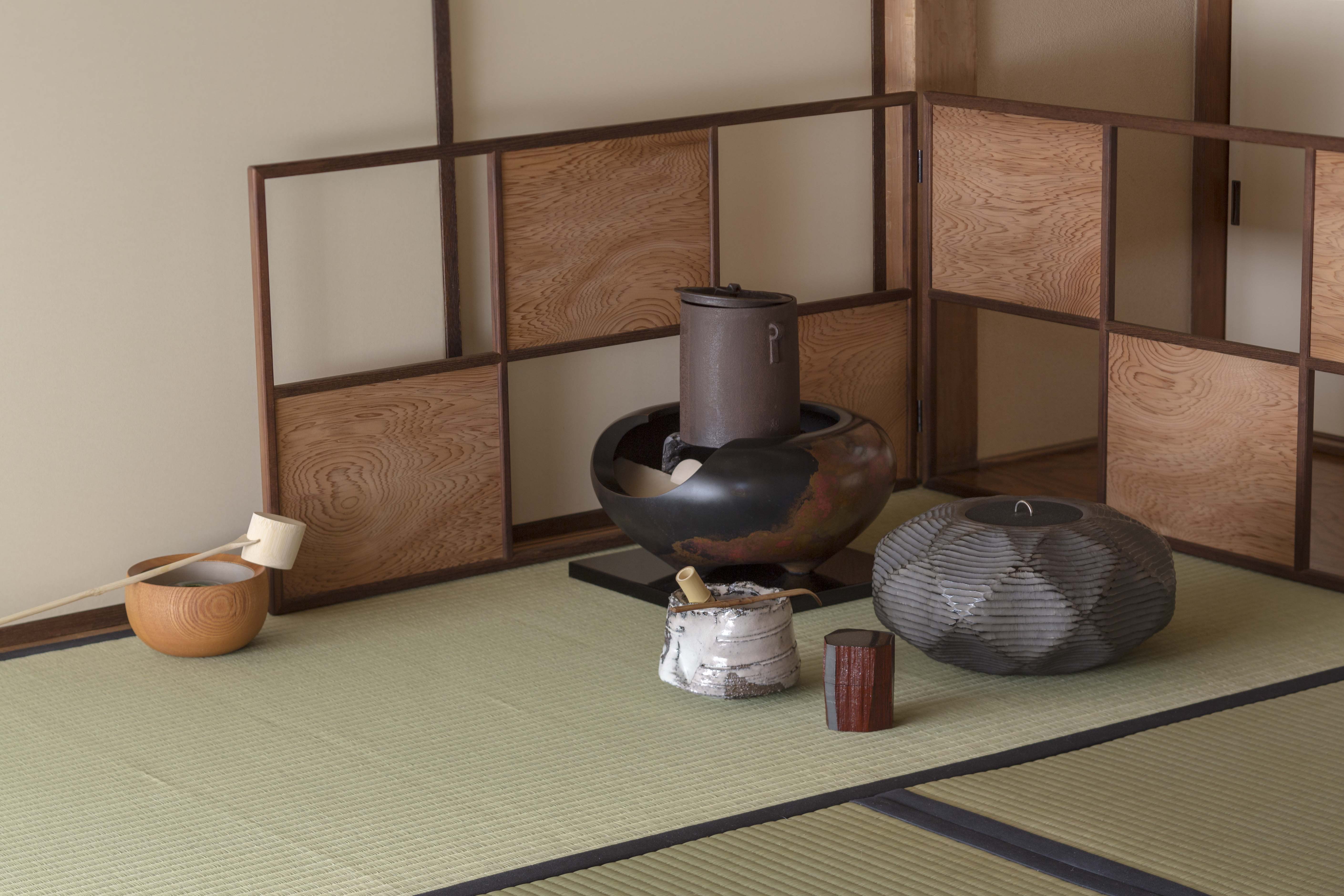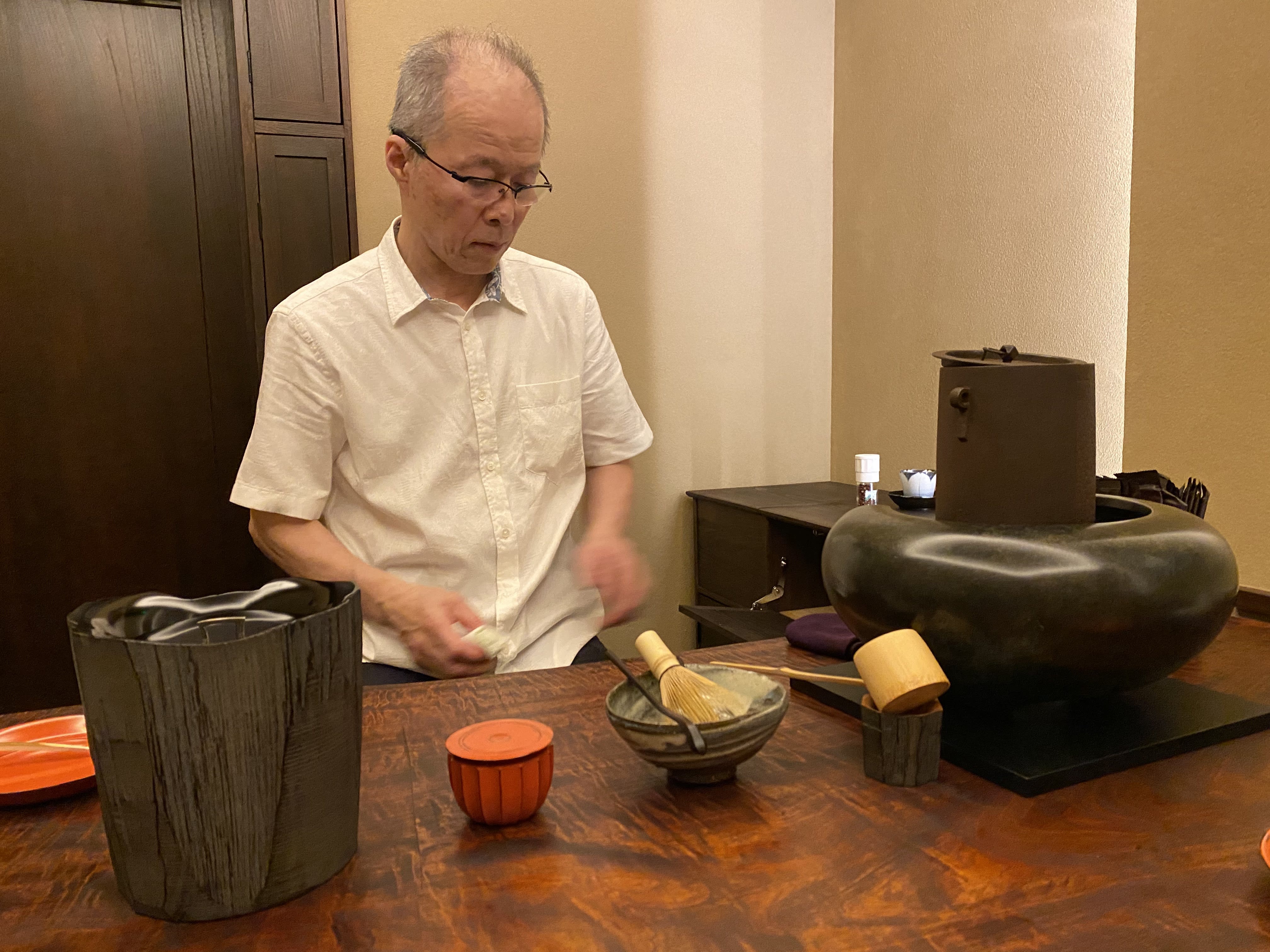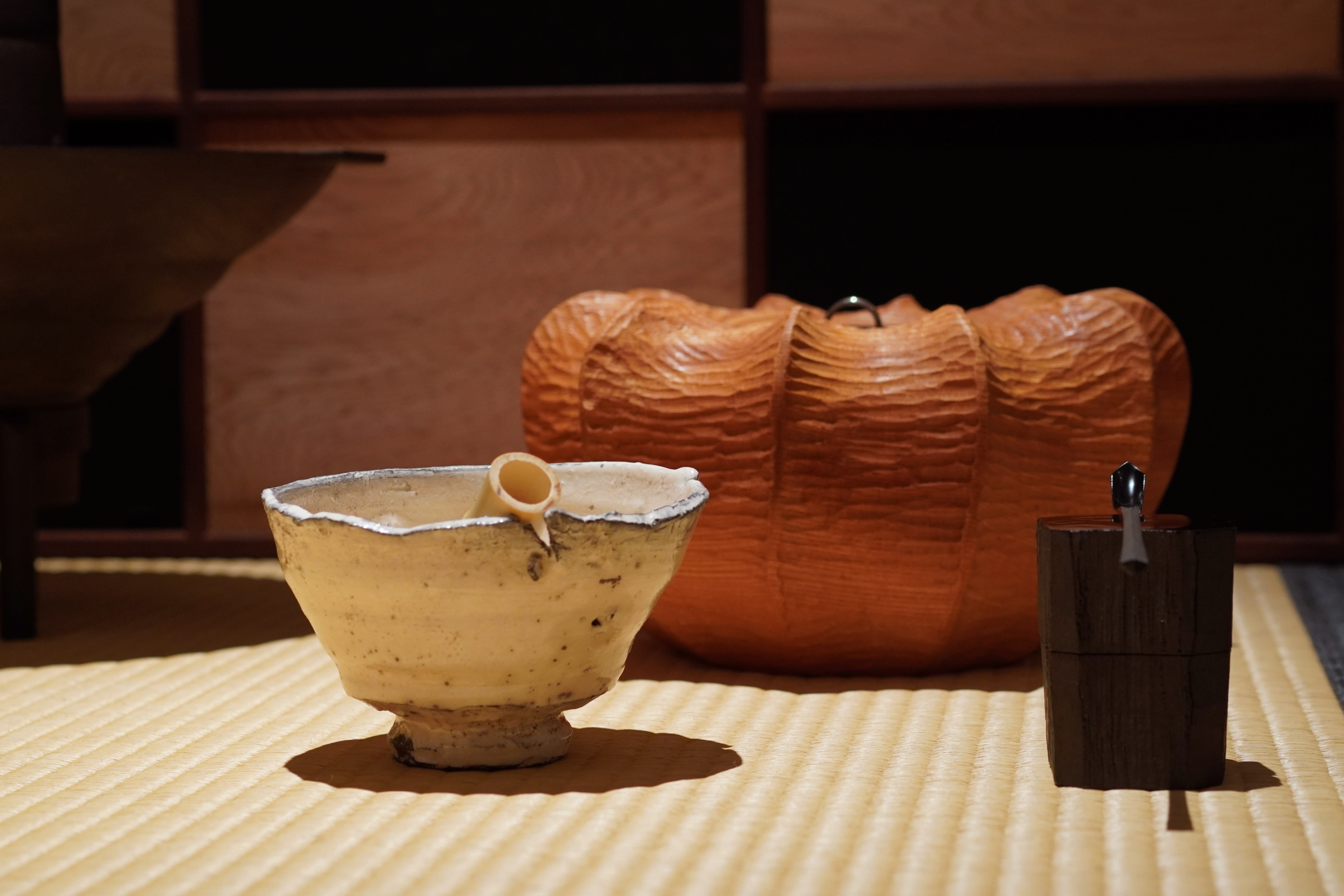
Toriawase Assortment; Jihei Murase, Kohei Nakamura, and Miya Nobuho, (2022)
Toriawase, meaning to "pick together," is the construction of the tea aesthetic before the ceremony begins. The ritualistic tea preparation is incomplete without the proper components. The natural elements of wood, earth, fire, and metal must be considered when preparing toriawase. Lacquer and tea master Jihei Murase selects pieces that contribute to the overall harmony of the assortment; hand-carved lacquer mizusashi (water container), nakatsugi tea caddy, and Mulberry tea scoop by Murase (right), a ceramic chawan by Kohei Nakamura (center), a metal kettle (kama and furo)—to be heated with fire— by Miya Nobuho (left), and a furosaki byoubu (wooden folding screen) by Jihei Murase (background).

Toriawase Assortment; Jihei Murase, Koji Hatakeyama, and Kohei Nakamura, (2022)
The colors, textures, and mediums of each piece depend on the composition of the accompanying tools; the round base of the brazier (furo) and tall kettle (kama), both of which are relatively inornate, use earthen tones, and have a mix of matte and shine, are visually heightened by the sulfur-oxidized and hatchet-cut mizusashi, which introduces elements of wood grain to the unnaturally smooth iron. Seasons must also be taken into account when determining the toriawase. In the winter, the chawan should have thick walls and a curved mouth that help to preserve the heat of the tea, whereas in the summer, a flatter and open-mouthed tea bowl is preferable. As the tea ceremony typically marks seasonal occasions rather than personal events, the elements of the tokonoma (tea room alcove), including the flower vase and kakejiku (hanging wall-scroll) reflect the themes and motif of the season, furthering immersing the audience in the experience of appreciating chadō: harmony, respect, purity, and tranquility.
The tea ceremony can be enjoyed in multiple environments, including the method of sitting seiza (formal kneeling) on tatami or, for participants who are less flexible, ryurei (table and chair style).

Jihei Murase, Ryurei Tea Ceremony, 2022
The organization of each piece has an order. The mizusashi, chawan, and tea caddy form an isosceles triangle, with the water container standing vigilantly above the bowl and caddy. There is nothing frivolous or unnecessary; each piece has a use in the ceremony, but the true magic of toriawase is the personal connections that are made by mixing and matching bowls, containers, and scoops with each new ceremony.

Toriawase Assortment; Jihei Murase and Kohei Nakamura, (2022)

